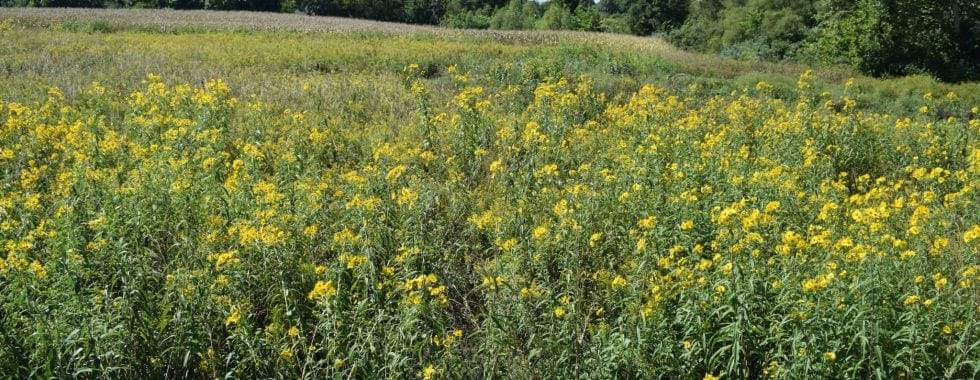
As summer comes to an end and the weather starts to get cooler, the colors of the prairie change from purples and pinks to different shades of yellow. The two families of plants that dominate during this time of year are Solidago and Helianthus; commonly known as goldenrods and sunflowers.
Everyone loves sunflowers. They are bright, tall, and very iconic of late summer. The butterflies are using these flowers as an important food source before migration. The flowers are relying on the bees and butterflies to act as pollinators. If you go out for a hike in a prairie that is covered in yellow flowers, look closely at the insects that are visiting. You will most likely get lucky and see some large bees. If you look closely at the back legs of these large bees, you will see the pollen baskets loaded with pollen that will both be deposited on other flowers as well as some that will end up back in the bee’s home. Pollen is an important protein source for raising bee larvae into adults.
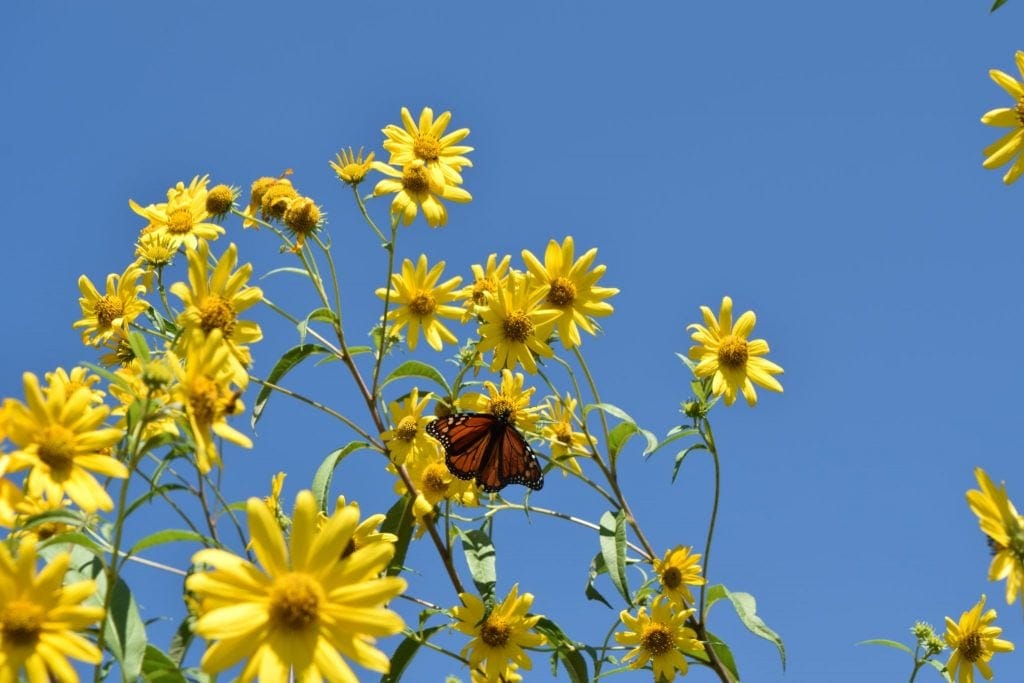
How ‘bout that goldenrod?!
Let’s talk about a plant that is not as well loved as the beautiful sunflowers. Goldenrod does not have a good reputation, but that’s because it has a case of mistaken identity. Goldenrod, like its name suggests, is bright yellow and blooms in the late summer and early fall.
Another plant, which deserves its noteworthy reputation, that blooms about the same time is ragweed. Ragweed has a very inconspicuous flower that is wind pollinated, not insect pollinated.
Why is this important? Wind pollinated plants have light weight pollen that can be easily picked up by even a slight breeze and carried for a fair distance. This wind dispersed pollen can be deposited in lots of different places, including the nasal passages of humans. Those of us with pollen allergies know exactly when the ragweed is blooming.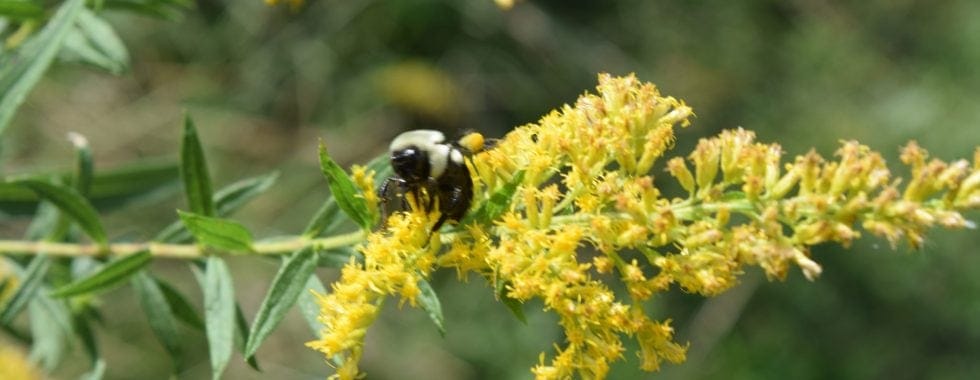
The goldenrods on the other hand have heavy pollen that must be dispersed by insects. The pollen is way too heavy to travel any distance on the wind, therefore this pollen is not going to make its way into our face.
This same relationship plays out with most plants. Plants with bold, colorful flowers are animal pollinated while plants with small, inconspicuous flowers tend to be wind pollinated.
What about the other allergy season, you may ask? Plants that are blooming in the spring are the trees. Oaks, maples and ash trees do not have showy flowers, but the pollen is everywhere!
So next time you head out on a hike, don’t fear the goldenrod. Enjoy the bright beautiful flowers and spot some bees doing important work.
DIY Family Activity
![]()
Below, you will find a few activities that will help you explore the insects that rely on the goldenrod for food.
Activity 1:
Step 1: Gather a clipboard, white piece of paper, and head out to a field of goldenrod.
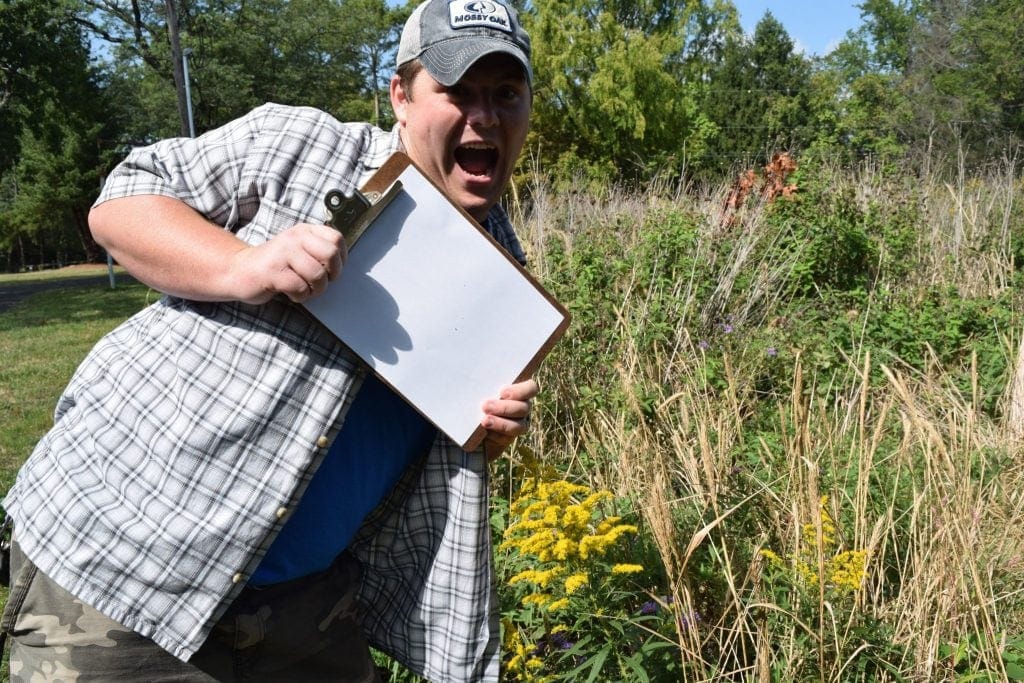
Step 2: Put the white piece of paper on the clipboard. With the flower still on the plant, smack a stem of goldenrod flowers onto the white piece of paper.
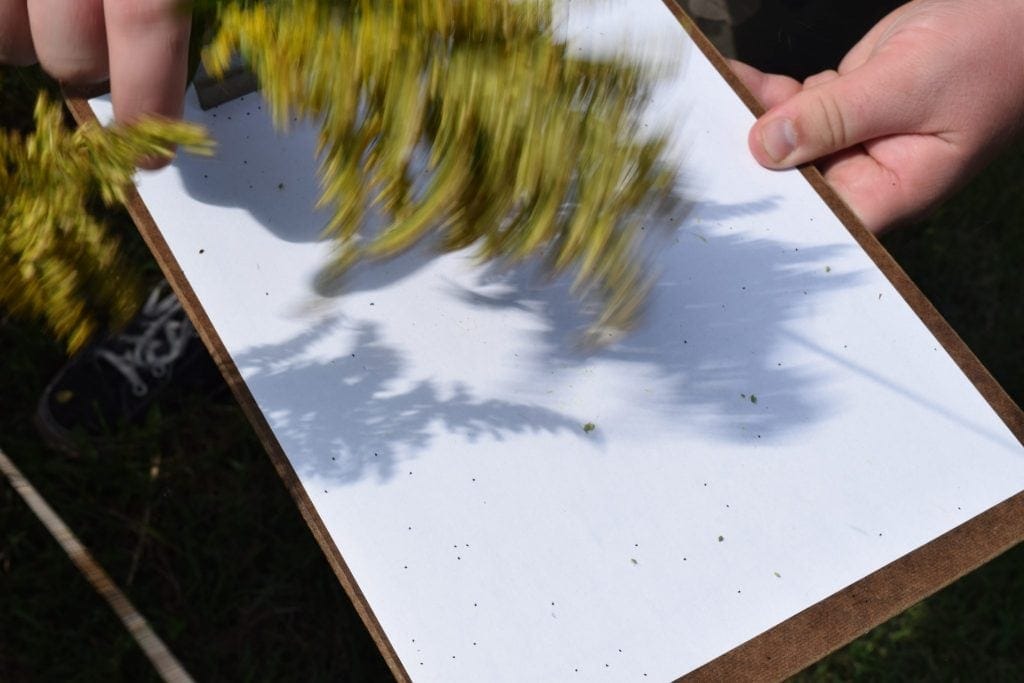
Step 3: Look as what falls out of the flowers. You might find a crab spider, a number of beetles, or lots of other insects.
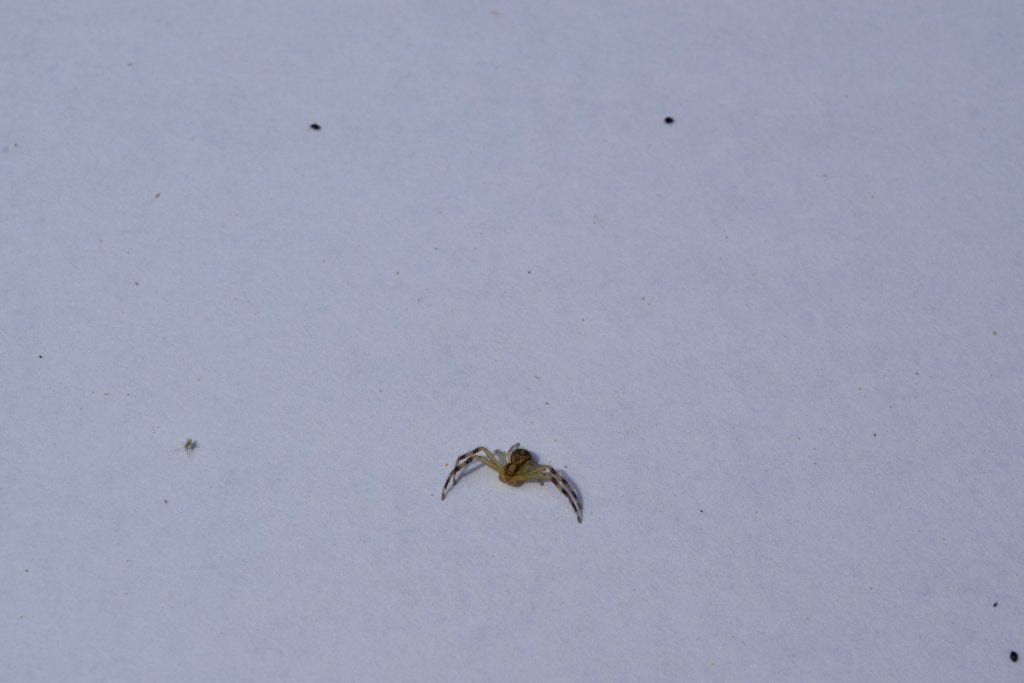
Step 4: Make sure to look at the whole plant, you might get lucky and find a praying mantis sitting and wait for a yummy snack.
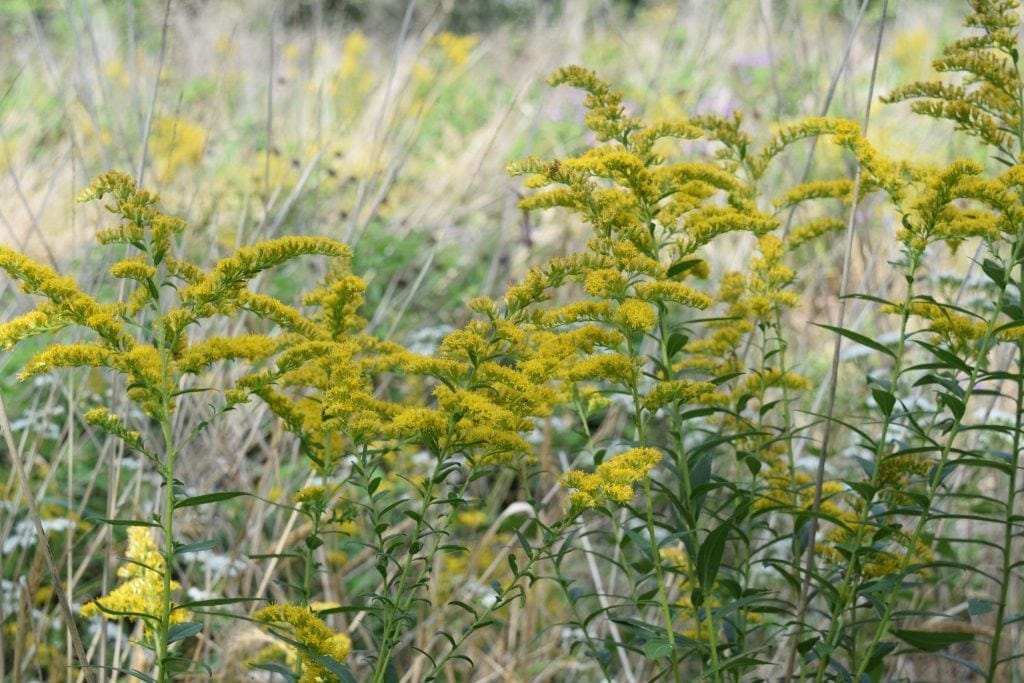
Activity 2:
When the goldenrod has died back for the winter, you can easily spot the galls in the stems. The galls are made by flies that lay eggs inside the stem and the plant grows a home around that egg, which just looks like a ball inside of the stem. The fly larvae then eats the plant material around it and either becomes an adult and flies away or gets eaten by a bird. You can cut open the gall to look for the fly larvae. Always be careful with knives and provide proper supervision to children when around sharp objects.

Leave A Comment